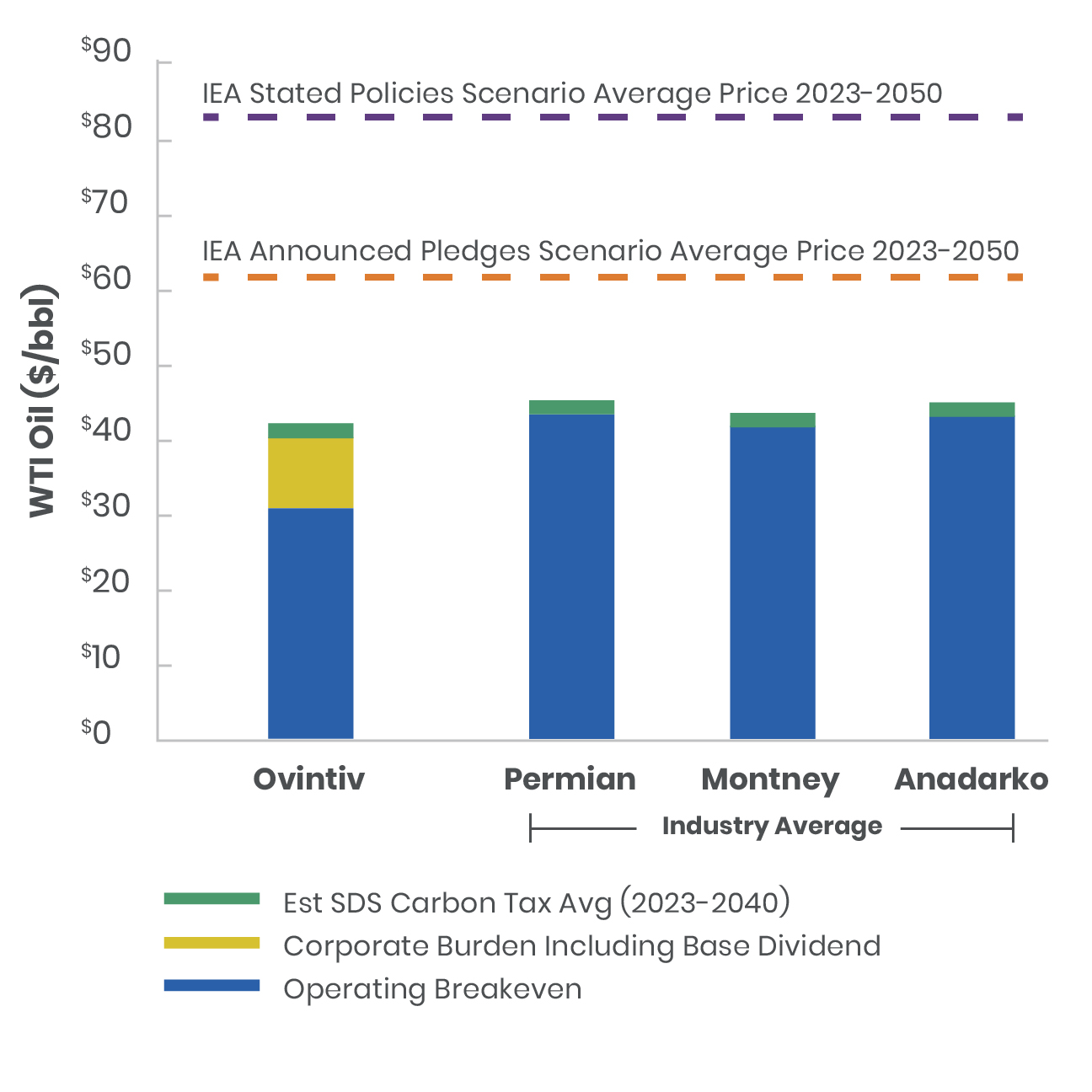CLIMATE-FOCUSED SCENARIO ANALYSIS
We consider climate-related risks throughout our corporate strategic planning and scenario analysis process. In conducting our scenario analysis, we utilized internal modeling supported in part by the International Energy Agency’s (IEA) World Energy Outlook (WEO) to better understand the future patterns of a changing global energy system.
We used three of the scenarios included in the IEA’s 2022 Outlook, each of which contain assumptions regarding future population, economic growth and hydrocarbon supply and demand.
Stated Policies Scenario (STEPS): Reflects current policy settings that are in place and have been announced by governments around the world
Announced Pledges Scenario (APS): Assumes that all climate commitments made by governments around the world will be met in full and on time
By using scenarios, we can evaluate a range of potential risks related to commodity pricing and emissions reduction structures. Specific to our portfolio, we test our current assets against potential future outcomes to determine where challenges and opportunities may exist. We also assess portfolio resiliency by comparing our assets’ performance under different IEA price forecasts adjusted to the WTI benchmark against publicly available breakeven price assumptions per play. For this analysis, we also incorporate an escalating carbon tax up to $200/T CO2e by 2050 in line with the IEA APS.
For the purposes of this analysis, we have included an Ovintiv Base Case Scenario to demonstrate the current competitiveness of our portfolio compared to IEA forecasted prices. The Ovintiv Base Case Scenario assumes holding crude and condensate scale at maintenance capital levels and is non-GAAP free cash flow positive after base dividend.
It is important to note that our analysis assumes a consistent break-even price. Ovintiv has a strong track record of knowledge sharing, adopting innovative practice and driving efficiencies through our business. We expect this performance to continue, further decreasing our break-even prices and increasing our portfolio resiliency.
In alignment with the SASB reporting recommendations, we tested our year-end 2022 reserves against the conditions outlined in the IEA’s APS. The commodity pricing associated with the APS compared to the SEC trailing price forecast used for the year-end 2022 evaluation was lower. As a result, under the associated pricing and escalating carbon tax, the value of Ovintiv’s SEC 1P reserves would be ~30% lower on a NPV10 basis due primarily to lower commodity pricing. However, the net present value of our future cash flows remains positive under the APS scenario, and we believe that our multi-basin, diversified product portfolio is well positioned to be resilient in a low-carbon scenario.
Third–party basin average operating break-even

Significant Free Cash Flow Potential Across both of the IEA Scenarios